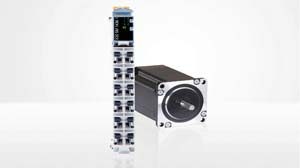Wireless Transmission of Safety Data
Open SAFETY bus protocol takes advantage of UDP The open SAFETY safety bus protocol can now be transmitted via UDP using the black channel principle. This facilitates the use of wireless transmission technologies for safety communication. openSAFETY can be configured

Open SAFETY bus protocol takes advantage of UDP
The open SAFETY safety bus protocol can now be transmitted via UDP using the black channel principle. This facilitates the use of wireless transmission technologies for safety communication. openSAFETY can be configured flexibly, making it particularly well suited for wireless data transmission. One application of wireless transmission for safety data is to communicate between fixed base stations and moving system components. This principle is used in warehouse logistics and baggage transport systems, for example. The user can configure openSAFETY with latencies of up to 2.5 seconds. This prevents low bandwidth or brief transmission interruptions from triggering unwanted safety reactions or stopping the machine.
Safe Self-driving Units
Wireless safety communication allows self-driving units to switch safety zones without interruption. The transition from one zone to the next is seamless. This means that the units can be used flexibly and are always safe within the network. To provide comprehensive diagnostics, openSAFETY also has error counters and other diagnostic functions.

Save Energy and Increase Performance
B&R introduces new stepper motor module from the X20 series
With the X20SM1436-1 module, B&R has added to its portfolio a new X20 module for direct control of stepper motors. The module can be used to operate stepper motors with operating voltages from 18 to 60 VDC at rated currents up to 2.5 A. In addition, the integrated current reduction function increases performance and reduces energy consumption.
With the current reduction function, B&R has integrated sensorless, load-dependent current control, which significantly increases the performance of the module. By regulating the current downwards depending on the operating situation and load, the module allows energy savings of up to 75 percent.
Smoother Operation
The current reduction function also significantly reduces power dissipation and heat accumulation in the module. At the same time, current control also results in the stepper motor running more smoothly. For self-protection, the stepper motor module has an inrush current limiter and a motor outlet with short circuit and overload protection.
The module has four digital 24 VDC inputs. Three of them can be configured as ABR encoder inputs with a counter frequency of 50 kHz for 4x evaluation. In addition, all digital inputs have open circuit monitoring, which increases operational security. To detect slippage, the module has been equipped with stall detection.
Hits: 53










